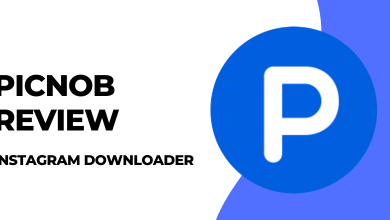Understanding Get_Ready_Bell:Client_Pulse: Key Steps to Get Ready for Success

Introduction to Get_Ready_Bell:Client_Pulse
In the competitive landscape of client servicing, understanding and responding to the Get_Ready_Bell:Client_Pulse is fundamental to achieving sustainable success. Every business, irrespective of its size or industry, relies heavily on its clients for growth and profitability. Therefore, mastering the art of reading and responding to client needs and expectations can significantly impact the overall success of your business. This comprehensive article delves into the intricacies of Get_Ready_Bell:Client_Pulse, offering actionable insights and strategies to help you effectively anticipate, understand, and meet client expectations.
What is Client Pulse?
Get_Ready_Bell:Client_Pulse refers to the collective sentiments, needs, and expectations of your clients at any given time. It encompasses their satisfaction levels, concerns, preferences, and the overall relationship they have with your business. Understanding client pulse involves more than just basic satisfaction surveys; it requires a deeper, more nuanced understanding of their motivations and pain points.
Why Understanding Client Pulse Matters
- Retention and Loyalty: Happy clients are more likely to stay with your business and become loyal advocates. By understanding their pulse, you can anticipate issues before they escalate and proactively address their needs.
- Business Growth: Satisfied clients are not only more likely to stay but also more likely to recommend your services to others. This word-of-mouth promotion can significantly contribute to your business growth.
- Differentiation: In a competitive market, understanding client pulse gives you a distinct advantage. By tailoring your services to meet their specific needs, you position yourself as a preferred provider over competitors who may not be as attuned to client needs.
- Innovation Opportunities: Client feedback often reveals opportunities for innovation and service improvement. By listening to their pulse, you can identify gaps in the market or areas where your services can be enhanced.
Steps to Get Ready for Client Pulse
Listen Actively
Active listening is the cornerstone of understanding client pulse. It involves more than just hearing what clients say; it requires empathy and a genuine effort to comprehend their underlying concerns and motivations. Techniques such as regular client meetings, surveys, and feedback forms can provide valuable insights into client sentiment.
Gather Comprehensive Data
To truly understand client pulse, you need comprehensive data. This includes both quantitative data (such as satisfaction scores and sales figures) and qualitative data (such as anecdotal feedback and individual client stories). Analyzing this data can reveal patterns and trends that help you make informed decisions.
Segment Your Clients
Not all clients are the same, and their needs may vary based on factors such as industry, company size, or geographical location. Segmenting your clients allows you to tailor your approach and services to meet the specific needs of different client groups effectively.
Anticipate Needs and Proactively Respond
Rather than waiting for clients to voice their concerns, anticipate their needs based on past interactions and industry trends. Proactively offering solutions demonstrates your commitment to their success and fosters a stronger client-provider relationship.
Communicate Effectively
Clear and transparent communication is essential for maintaining a positive client pulse. Keep clients informed about changes, updates, and potential challenges that may affect them. Establishing open lines of communication encourages clients to share their feedback and concerns more freely.
Empower Your Team
Client pulse is not solely the responsibility of the client-facing team; it should be ingrained in the culture of your entire organization. Empower your team members to take ownership of client relationships and provide them with the tools and training needed to understand and respond to client needs effectively.
Continuous Improvement
Client pulse is not static; it evolves over time. Continuously seek feedback and monitor changes in client sentiment to adapt your strategies accordingly. Embrace a culture of continuous improvement to ensure that your services remain aligned with client expectations.
Case Studies and Examples
To illustrate the importance of understanding Get_Ready_Bell:Client_Pulse, consider the following case studies:
- Case Study 1: XYZ Consulting Consulting implemented a proactive client feedback system that allowed them to identify recurring issues and address them before clients became dissatisfied. This approach not only improved client retention but also enhanced overall client satisfaction scores.
- Case Study 2: ABC Software ABC Software segmented their client base based on industry verticals and customized their support offerings accordingly. This targeted approach not only increased client engagement but also led to a higher conversion rate from trial users to paying customers.
Additional Strategies for Understanding Client Pulse
Utilize Technology
Invest in customer relationship management (CRM) systems and other technology tools that help you track client interactions, preferences, and feedback. These tools can provide valuable data insights and streamline communication processes.
Conduct Regular Surveys and Feedback Sessions
Set up regular surveys and feedback sessions with your clients to gauge satisfaction levels and uncover areas for improvement. Ensure these sessions are structured to gather both quantitative and qualitative feedback effectively.
Monitor Social Media and Online Reviews
Social media platforms and online review sites are valuable sources of client feedback. Monitor these channels regularly to understand what clients are saying about your business and promptly address any issues or concerns raised.
Stay Updated with Industry Trends
Stay informed about industry trends and changes that may impact your clients. By understanding the broader context in which your clients operate, you can better anticipate their evolving needs and preferences.
Encourage Client Engagement and Participation
Create opportunities for clients to engage with your business beyond transactions. For example, host webinars, events, or advisory boards where clients can provide input on future product developments or industry challenges.
Celebrate Successes Together
Acknowledge and celebrate milestones and successes with your clients. Recognizing their achievements fosters a sense of partnership and reinforces positive client relationships.

Implementing a Client Pulse Strategy: A Step-by-Step Guide
Step 1: Assess Your Current Client Relationships
Conduct an audit of your existing client relationships to identify strengths, weaknesses, and areas for improvement. Gather feedback from key stakeholders within your organization to gain a holistic view.
Step 2: Define Clear Objectives and Metrics
Establish clear objectives for your client pulse strategy, such as improving client satisfaction scores or increasing client retention rates. Define specific metrics to measure progress towards these objectives.
Step 3: Develop a Communication Plan
Outline how you will communicate your client pulse strategy to internal teams and clients. Ensure that everyone understands their role in gathering and responding to client feedback effectively.
Step 4: Implement Feedback Mechanisms
Deploy various feedback mechanisms, such as surveys, focus groups, and one-on-one interviews, to gather insights into client sentiment. Use these insights to identify trends and prioritize areas for improvement.
Step 5: Analyze Data and Take Action
Analyze the data collected from your feedback mechanisms to identify patterns and opportunities for enhancement. Prioritize action items based on impact and feasibility, and develop an action plan with clear timelines and responsibilities.
Step 6: Monitor and Adjust
Continuously monitor client sentiment and the effectiveness of your actions. Be prepared to adjust your strategy based on new insights or changes in client needs and expectations.
Step 7: Foster a Culture of Client-Centricity
Embed a client-centric culture within your organization by celebrating successes, recognizing team members who excel in client relations, and integrating client feedback into decision-making processes.
Conclusion
Understanding and responding to Get_Ready_Bell:Client_Pulse is not just a business strategy; it is a mindset that permeates every aspect of your organization. By prioritizing client relationships, actively listening to their feedback, and continuously striving for improvement, you can foster strong client loyalty, drive business growth, and differentiate yourself in the marketplace. Remember, clients are more than just transactions—they are partners in your journey towards success. Embrace their pulse, anticipate their needs, and exceed their expectations to build lasting and mutually beneficial relationships.




